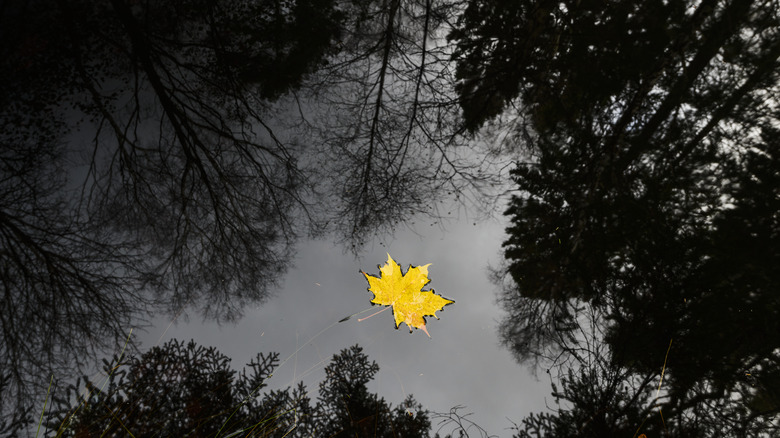How To Make Your Own Compass With Things You Can Find In The Woods
One of the best ways to prevent being lost in the woods is to have a reliable navigation device. As a result, most hikers and campers carry either a handheld GPS or a magnetic compass. However, this does not always guarantee you will have a source of direction. Compasses can be lost or broken. Electronics can malfunction or die. Even if they are up and running, GPS units can sometimes give false locations. According to the U.S. Space Force, this most commonly happens when signals are blocked, which can happen from trees or other overhead obstacles, or reflected, as sometimes happens when a signal bounces off a building, mountain, or other object.
If you suddenly and unexpectedly find yourself unable to rely on your navigational device or compass, there are a number of hacks you can use to help determine directions. For instance, you can use the sun to find your way if you're lost in the wilderness. However, there are times you can't see the sun due to mountains, trees, or other obstacles. But, even without seeing the sun or any landmarks, you can improvise to make your own compass with things you can find in the woods. While the directions you glean from this DIY compass won't be pinpoint precise, they will be accurate enough to help you find your way if you are lost in the woods.
All you need is a needle to make your own compass
When it comes to making your own compass from scratch, the only thing you really need that you either won't have on or can't find in the woods is a sewing needle. However, a small sewing kit, like the Singer Survival Sew Kit, is a good idea to keep in your emergency supply pack, anyhow. So, if you have one in your pack, you can grab the needle from it. If you don't already have one, you should consider getting one before your next outdoor excursion. The other items needed to make your own compass are a puddle of water, a leaf, and a piece of cloth, preferably wool or silk. The cloth can just be whatever you are wearing at the time.
To find your bearings with these simple materials, run the needle with the cloth about 100 times. This will give the needle a static charge. Then, carefully put the leaf in the puddle of water. While it is floating there, put the needle on top of it. The thicker end of the needle — where the thread is inserted –- should move to magnetic north. In order to get an accurate reading, it is critical the needle not be affected by wind. So, if there is a breeze, be sure to create some sort of wind block.
With the fat end of the needle pointing toward magnetic north, you will be able to surmise rough directions for west, east, and south. While these directions will not be as precise as a GPS or compass, they should be sufficient to get you headed in the right direction to find your way back to your camp or vehicle.

